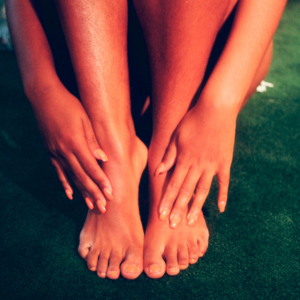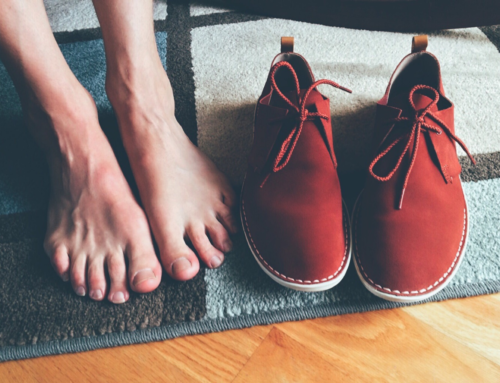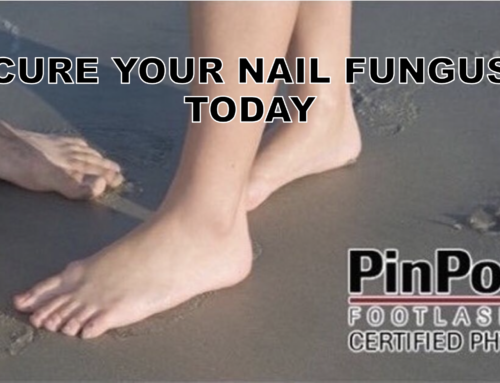Toenail fungus, or onychomycosis, is a common nail infection that affects the nail bed and plate, causing discoloration, thickening, and brittleness. While it may start as a minor cosmetic issue, untreated toenail fungus can worsen, spread to other nails, and become painful. Early diagnosis and proper treatment are crucial for restoring healthy nails and preventing further infection.
Carle Place, NY, located in Nassau County on Long Island, has residents who often frequent public pools, gyms, and locker rooms—prime environments for fungal spores to spread. Additionally, humid summers and damp winter conditions in New York can increase the risk of fungal growth. Being aware of these local factors and taking preventive measures is key to keeping your nails healthy.
Symptoms of Toenail Fungus
Toenail fungus develops gradually, and early symptoms can be easy to miss. Look for:
-
Discoloration: Yellow, brown, or white spots on nails
-
Thickened nails: Nails that are harder to trim
-
Brittleness: Nails splitting, flaking, or crumbling
-
Odor: Sometimes a subtle but noticeable smell
If you notice these symptoms, it’s important to consult a podiatrist promptly. Early treatment increases the likelihood of a complete cure.
Causes and Risk Factors
Toenail fungus spreads through direct contact with fungal spores and thrives in warm, damp conditions. Common risk factors include:
-
Walking barefoot in communal areas like pools, gyms, and locker rooms
-
Sharing socks, shoes, or nail care tools
-
Nail trauma or injury from stubbing toes, sports, or ill-fitting shoes
-
Poor blood circulation, especially in individuals with diabetes
-
Weakened immune systems or age-related susceptibility
-
Family history of nail fungus
Understanding the causes and risks helps prevent further infections and keeps nails healthy.

Tips to Avoid Toenail Fungus
Our toenail doctors recommend these preventive measures:
-
Use your own clippers: Avoid sharing nail clippers, and sanitize your own tools with alcohol or antifungal solutions.
-
Wear proper shoes: Ensure correct shoe size and alternate shoes to allow drying.
-
Don’t walk barefoot in public: Wear flip-flops in pools, gyms, and locker rooms.
-
Keep feet dry: Wash and thoroughly dry feet daily, paying attention to spaces between toes.
-
Maintain hygiene: Avoid sharing socks, shoes, or nail care tools.
By following these guidelines, you can minimize the risk of infection.
Why Laser Treatment is the Best Option
Our nail doctors recommend laser treatment using the FDA-approved PinPointe laser as the most effective solution for toenail fungus. Compared with topical solutions, oral medications, or toenail removal, laser treatment offers:
-
Highest cure rate: Approximately 85% success, usually with just one treatment
-
Safe and painless: No side effects, suitable for adults and children
-
No downtime: Resume daily activities immediately after treatment
Topical treatments are minimally effective, with a 5–10% cure rate, and oral medications carry risks such as liver toxicity. Toenail removal does not eliminate the fungus and is generally not recommended. Laser treatment targets the fungus directly, penetrating the nail and eradicating spores beneath the surface.
Fun Things to Do in Carle Place, NY
Carle Place, NY, may be a small hamlet on Long Island, but it offers a surprising number of activities and is conveniently located near some of Nassau County’s most popular destinations. Residents and visitors alike enjoy its balance of community charm, shopping convenience, and access to entertainment. Whether you’re planning a day out with family, meeting friends, or just exploring the area, Carle Place has plenty to offer.
Roosevelt Field Mall – Shopping and Dining at Its Best
One of the biggest attractions near Carle Place is Roosevelt Field Mall, one of the largest shopping centers in the United States. Just minutes away, this mall features hundreds of stores ranging from luxury brands to everyday favorites, along with an impressive dining court and sit-down restaurants. It’s a top spot for locals looking to shop, dine, or catch a movie. Spending time walking through such a massive shopping center requires healthy, comfortable feet—yet another reason why toenail health matters.
Carle Place Community Park
For a more local experience, Carle Place Community Park offers outdoor recreation right in the neighborhood. The park includes playgrounds, sports fields, and open green space, making it a favorite for families and athletes. Whether you’re taking a casual stroll, enjoying a pickup game, or letting the kids play, it’s a great reminder of how staying active goes hand-in-hand with overall wellness.
Dining Around Carle Place
Carle Place is also well-known for its diverse food scene. The area offers everything from Italian trattorias and steakhouses to casual diners and international cuisines. Restaurants such as West End Café and Vincent’s Clam Bar are local favorites, known for their hearty meals and welcoming atmosphere. A night out dining in Carle Place is always a treat, and with so many options, you’ll never run out of new flavors to try.
Nearby Entertainment and Activities
Being located in Nassau County means Carle Place is close to many other Long Island attractions. Within a short drive, you can reach Nassau Coliseum, home to concerts, sporting events, and family entertainment. For those who love history, Old Westbury Gardens offers a chance to explore stunning mansion grounds and gardens. If you prefer a cultural outing, the Long Island Children’s Museum and Cradle of Aviation Museum in nearby Garden City make for engaging family-friendly trips.
Outdoor Fun and Recreation
For nature lovers, Carle Place’s central location makes it easy to access Long Island’s beaches and parks. Jones Beach State Park and Eisenhower Park are just a short drive away, offering opportunities for swimming, hiking, biking, and more. These spots are perfect for active residents who love spending time outdoors, but they also highlight why keeping your feet in good shape is important—fungal infections can make these activities less enjoyable.
Events and Community Spirit
Carle Place also benefits from its strong community spirit. Throughout the year, there are local events, school activities, and seasonal celebrations that bring residents together. Its small-town feel combined with big-city access makes it an appealing place to live and visit.
Why Nail Health Matters in Carle Place
With so many opportunities to walk, shop, dine, and explore in and around Carle Place, toenail health plays a bigger role in daily comfort than people may realize. Whether you’re strolling through Roosevelt Field, enjoying community parks, or spending a day at the beach, toenail fungus can make even simple activities uncomfortable. That’s why seeking effective treatment, such as advanced laser therapy, helps residents stay active and confident while enjoying everything Carle Place has to offer.
Schedule a Consultation
If you notice signs of toenail fungus in Carle Place, NY, don’t wait. Our podiatrists provide expert evaluation and the PinPointe laser treatment to safely and effectively eliminate toenail fungus. Call (800) 672-0625 or visit our website to schedule a free consultation at a nearby location.




